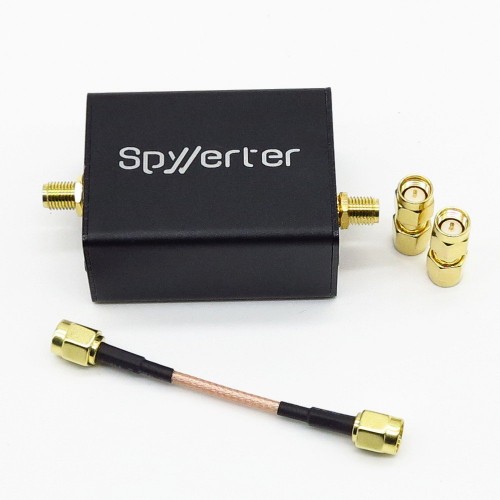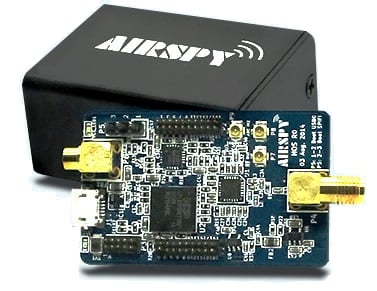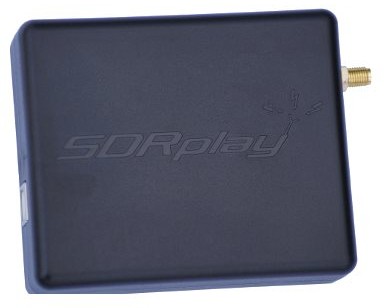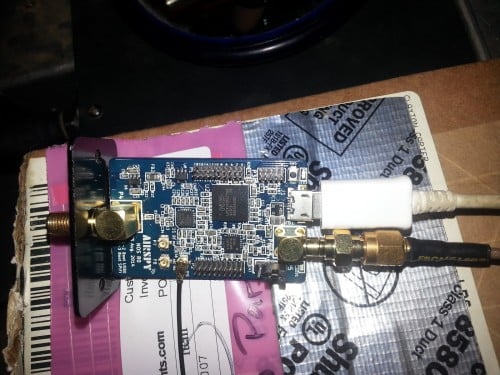SpyVerter Upconverter now for sale
The team behind the Airspy software defined radio (as well has the popular SDR# software package) have just released the SpyVerter upconverter for sale. Upconverters shift HF frequencies (0 – 30 MHz) “up” by a fixed amount, giving receivers that can’t tune that low like the RTL-SDR and the Airspy the ability to receive HF signals.
The SpyVerter extends reception all the way down to DC and has a 60 MHz low pass filter. Its main selling point is its H-Mode architecture which provides excellent IIP3 performance. This basically means that strong HF signals are unlikely to cause overloading in the up-conversion stage. The good IIP3 performance should improve HF reception when compared to other upconverters even with lower end SDR’s like the RTL-SDR. The reason is that when hit by strong HF signals many other upconverters will overload in the upconversion mixing stage, before even reaching the SDR, thus requiring the need for attenuators or antennas with less gain.
Another selling point is its good performance down to DC, making it ideal for VLF reception.
SpyVerter is designed for optimal performance with the Airspy and can be powered directly by the Airspy’s bias tee. However, RTL-SDR users can also use the SpyVerter by powering it through the micro USB connector, or by using it with one of our RTL-SDR Blog units with the activatable bias tee.
The SpyVerter sells for $59 USD and comes in a metal enclosure with three bonus SMA adapters. There is a $9 USD discount for Airspy owners.
At these prices combined with its claimed performance and metal enclosure we now generally recommend the SpyVerter over any other upconverter. The designers of the SpyVerter have sent us a sample unit and we will review it after testing it out over the next few weeks, but our initial tests already show good performance.






